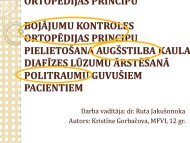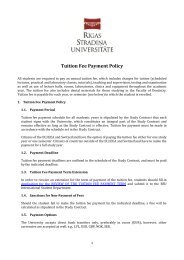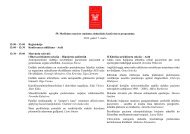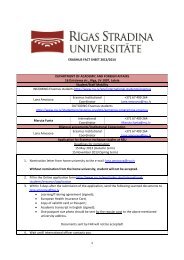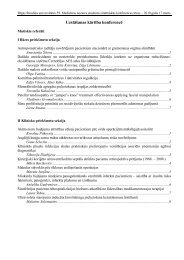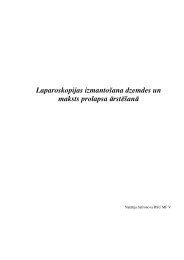History of Latvia: a Brief Survey
History of Latvia: a Brief Survey
History of Latvia: a Brief Survey
- No tags were found...
Create successful ePaper yourself
Turn your PDF publications into a flip-book with our unique Google optimized e-Paper software.
In response to an incentive from the German Third Reich, about 80% <strong>of</strong> <strong>Latvia</strong>’s Germanminority (the Baltic Germans) moved to German territory in late 1939 and early 1940. At thatpoint in time, Germans constituted the third-largest national minority in <strong>Latvia</strong>, after Russiansand Jews, and made up more than 3% <strong>of</strong> the total population.The <strong>Latvia</strong>n government discerned a threat to its independence and empowered the <strong>Latvia</strong>nambassador in London with special authority to represent the country in case <strong>Latvia</strong>’ssovereignty was lost.In May 1940 the Soviet press in Russia began to voice regular unsubstantiated accusationsagainst the Baltic countries regarding alleged activities against Moscow. On 16 June 1940, an<strong>of</strong>ficial memorandum was issued to <strong>Latvia</strong> by the Soviet Union, in which Moscow demandedthe formation <strong>of</strong> a new government and the stationing <strong>of</strong> additional Soviet military units.The memorandum was a continuation <strong>of</strong> the Soviet Union’s illegal actions against theBaltic countries, which began on 23 August 1939. This was an act <strong>of</strong> blatant interferencein the internal affairs <strong>of</strong> a sovereign country, and its goal was the dissolution <strong>of</strong> <strong>Latvia</strong>’sindependence.Unfortunately, Western countries showed no desire to assist the Baltic countries in avertingtheir dismal fate. <strong>Latvia</strong>, Lithuania and Estonia were left under the domination <strong>of</strong> the USSR’saggressive tendencies. In an attempt to avoid bloodshed (war against the USSR), the <strong>Latvia</strong>ngovernment decided to fulfil Moscow’s peremptory demands. As a result, 100 000 SovietArmy troops occupied <strong>Latvia</strong> on 17 June 1940. Red Army units immediately seized control <strong>of</strong>all strategically important positions, thereby taking control <strong>of</strong> the entire country.The secret protocol <strong>of</strong> the ‘Molotov-Ribbentrop Pact’, which determined thetragic fate <strong>of</strong> the Baltic countries.33



